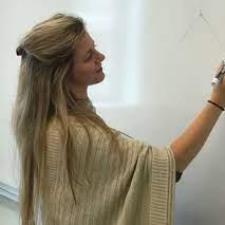
Niral P. answered • 12/26/20
Experienced Organic Chemistry and Math Tutor!
Hi Mira!
That's a good question -- and not one that's commonly asked (and really should be!)
When monitoring a reaction and looking at the progress of a reaction by TLC, those "three spot" plates are very common. As you said, the starting material is usually spotted at the left, the reaction (or final product) on the right, and a cospot in the middle. The cospot is very common to see when looking at reactions in which the starting material and final product may have similar Rf values, and it's easier to see if the two spots are resolved from each other or not. The cospot also had the added benefit of seeing if the starting material and product are interacting with each other on the TLC plate itself. All in all, it's mostly for confirmation that the spots from the starting material and the reaction contain elements of each of the two -- essentially that the spots on the final plate line up and have similar Rf values.
Hope that helps! If you need any more clarification, don't hesitate to ask :)
Sincerely,
Niral




